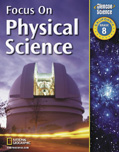1.
3.a A) The proton mass is about 200 times greater than the electron mass. B) The proton mass is about the same as the electron mass. C) The electron mass is about 2,000 times greater than the proton mass. D) The proton mass is about 2,000 times greater than the electron mass. 2.
3.f A) mass numbers B) atomic numbers C) chemical properties D) radioactive properties 3.
7.b A) mass number B) atomic number C) number of ions D) number of neutrons 4.
3.a A) The nucleus of an atom is much smaller than the atom. B) Positive charge is spread out evenly through the atom. C) Most of the space in an atom is taken up by the nucleus. D) Thomson's atomic model was correct. 5.
7.b A) the number of neutrons in the nucleus B) the number of protons in the nucleus C) the number of protons and neutrons in the nucleus D) the number of atoms in the nucleus 6.
7.b A) a nucleus with 10 protons and 6 neutrons B) a nucleus with 10 protons and 8 neutrons C) a nucleus with 6 protons and 10 neutrons D) a nucleus with 8 protons and 10 neutrons 7.
3.f A) in order of increasing chemical properties B) in order of increasing mass number C) in order of increasing number of isotopes D) in order of increasing atomic number 8.
3.a A) Light with a single wavelength is absorbed. B) Light with all wavelengths is given off. C) Light with a single wavelength is given off. D) Light with all wavelengths is absorbed. 9.
3.a A) 0 B) +1 C) -1 D) +2 10.
7.b A) same electric charge B) number of electrons C) number of protons D) same mass number 11.
7.b A) are radioactive B) have the same mass number C) have the same number of neutrons D) have the same chemical properties 12.
3.a A) The number of protons and neutrons equals the number of electrons. B) The number of protons equals the number of neutrons. C) The number of neutrons equals the number of electrons. D) The number of protons equals the number of electrons. 13.
3.a A) 6 B) 2 C) 8 D) 10 14.
3.a A) They move in circular orbits that can be any diameter. B) They can be anywhere in the electron cloud. C) They move in circular orbits that can have only certain diameters. D) They are mixed together with protons and neutrons. 15.
7.b A) symbol, wavelengths, chemical properties B) symbol, isotopes, ions C) name, physical properties, chemical properties D) name, symbol, atomic number
















